
GroupGSA designs Randwick cycle link
GroupGSA designs Randwick cycle link
Share
The global architecture practice is leading the design of two designated cycling routes that will connect the new Light Rail Terminus in Kingsford, Centennial Park, Sydney CBD, and onwards to South Coogee.
GroupGSA is designing the Randwick City Council and Transport for NSW sponsored project with engineering consultancy company Acor.
The 2.8 kilometre bi-directional cycleway from Centennial Park to Kingsord is estimated to be finished in early 2024, while the Kingsford to South Coogee route is currently under review.
Expanding bicycle corridors in the inner city and residential middle and outer rings has emerged as a big priority for the City of Sydney, with over $69 million directed towards bicycle-adjacent works over the next four years in the 2022 to 2023 budget.
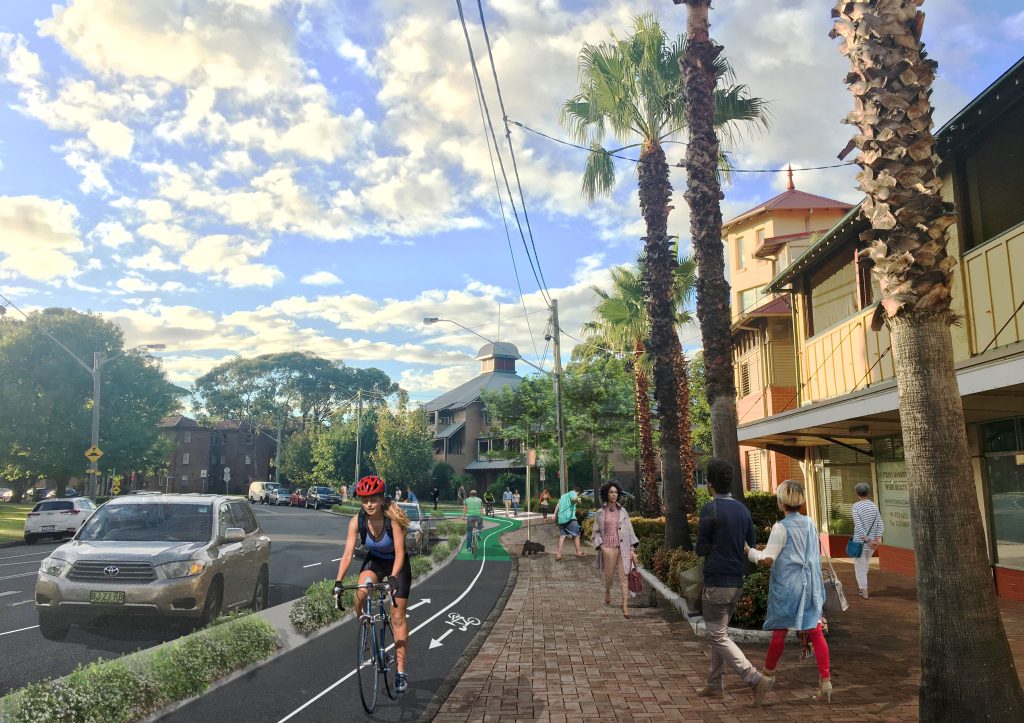
This drive for expanding cycling networks is not a new fad – since 2007, the City of Sydney has constructed 25 kilometres of separated cycleways, 60 kilometres of shared paths and 40 kilometres of additional cycling infrastructure.
An 18 percent increase from last year to now in bike trips across the Sydney CBD and outer suburbs acted as a key motivator for the recent budget allocation. However, cities are now fronted with the complex challenge of mobilising a soon-to-be overwhelmingly urban population.
Why drive when you can ride?
GroupGSA principal landscape architect Steven Hammond speaks of how more people are reconsidering the car as their primary source of transport against the backdrop of pursuing eco-conscious ways of living, working and commuting.
“Now more than ever, people are scrutinising their means of mobility, and the impact it has on their lives,” says Hammond.
He explains how thoughtful design is instrumental to these leaps forward in cycleway developments, as the additions must be slotted into existing street environments.
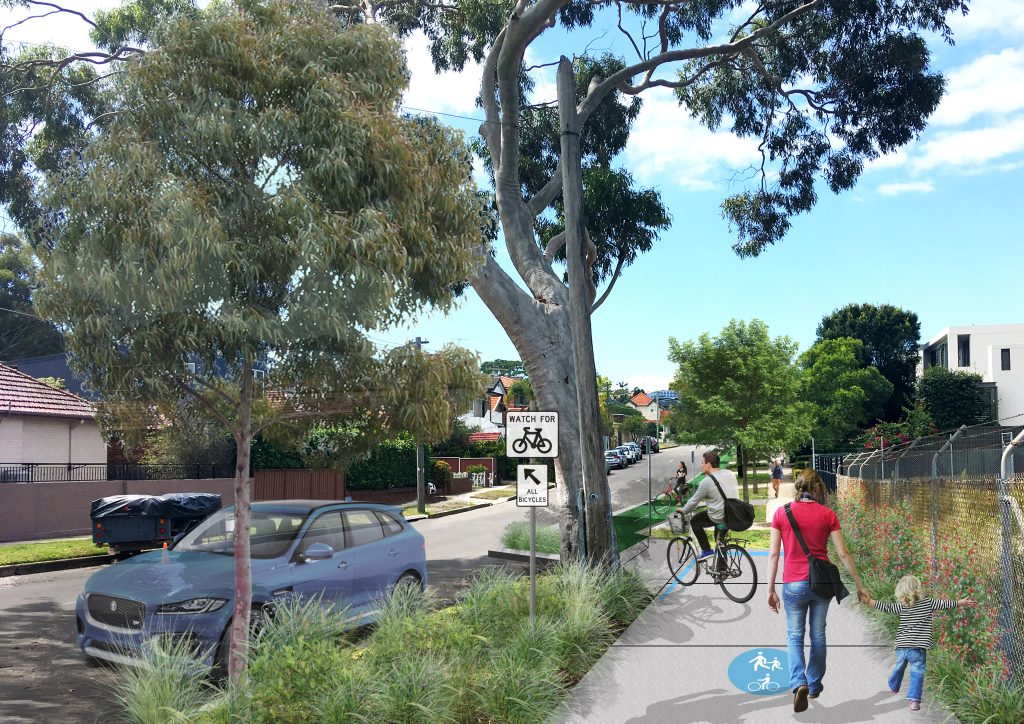
When interrogating the statistics, the necessity for efficient cycling infrastructure is clear. In Sydney, more than 30,000 people ride a bike each week and approximately one million people live within a half an hour bike ride of Sydney’s city centre.
Hammond says that in population-heavy city areas, journeys under five kilometres on a bike are generally faster than driving.
“When you consider just under half of all car trips in metropolitan areas are less than three kilometres there’s an obvious opportunity to encourage more people to adopt cycling,” says Hammond.
Taking inspiration from Bourke Street Cycleway
In 2011, GroupGSA designed the 3.2 kilometre Bourke Street Cycleway with GTA and Northrop. It was the first large-scale cycling infrastructure project of its nature in Sydney and spans Woolloomooloo in the north to Waterloo in the south.
The project was not only unprecedented in terms of scale, yet the incorporation of rain gardens protects existing street tree planting and street verge planting, and addresses stormwater quality improvements.
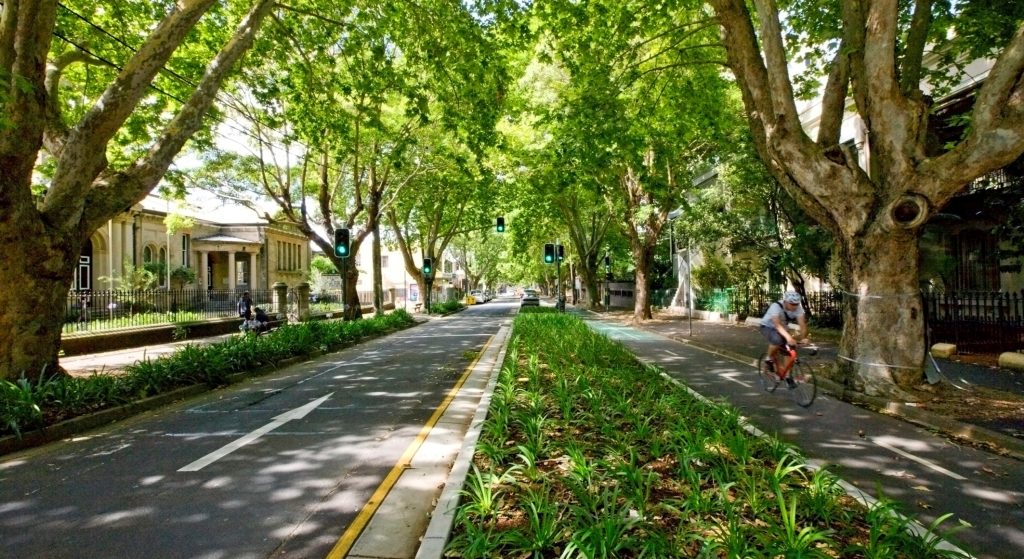
Known colloquially as a ‘green corridor’ for cyclists and pedestrians, the cycleway was once a main highway through the inner city to the airport. It is now flooded everyday with families and commuters riding to school and work.
Cycleways such as Bourke Street Cycleway that cover major intersections have noticed a daily average of 1616 bike trips in 2023, which is a 41 percent increase from last year.
Hammond confirms Bourke Street Cycleway is one of Sydney’s most significant civic boulevards.
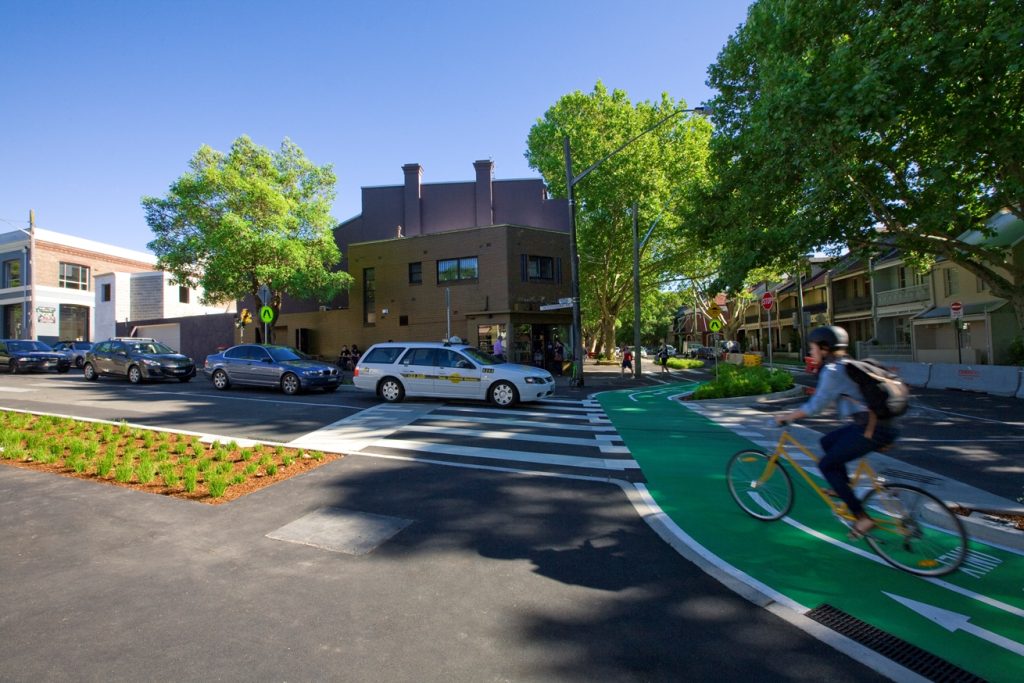
Randwick Cycleway ticks safety, sustainability and socialising boxes
From the multi-disciplinary efforts of landscape architects, civil engineers, traffic engineers and the wider community, cycleways extend beyond the obvious goal of simply alleviating traffic congestion.
The Randwick Cycleway’s paths, crossings and traffic-relaxing measures will improve pedestrian and road user safety, and also provide green spaces for resting and congregating.
“Cycleways tend to bring self-enforced street calming – narrowing the car lanes to fit cycle paths slows the speed of the cars down because they drive more cautiously, creating user-friendly benefits,” says Hammond.
He says it is imperative for cycleway design to cater to the needs of all users and also ensure subtle integration of the cycleways into existing street environments.
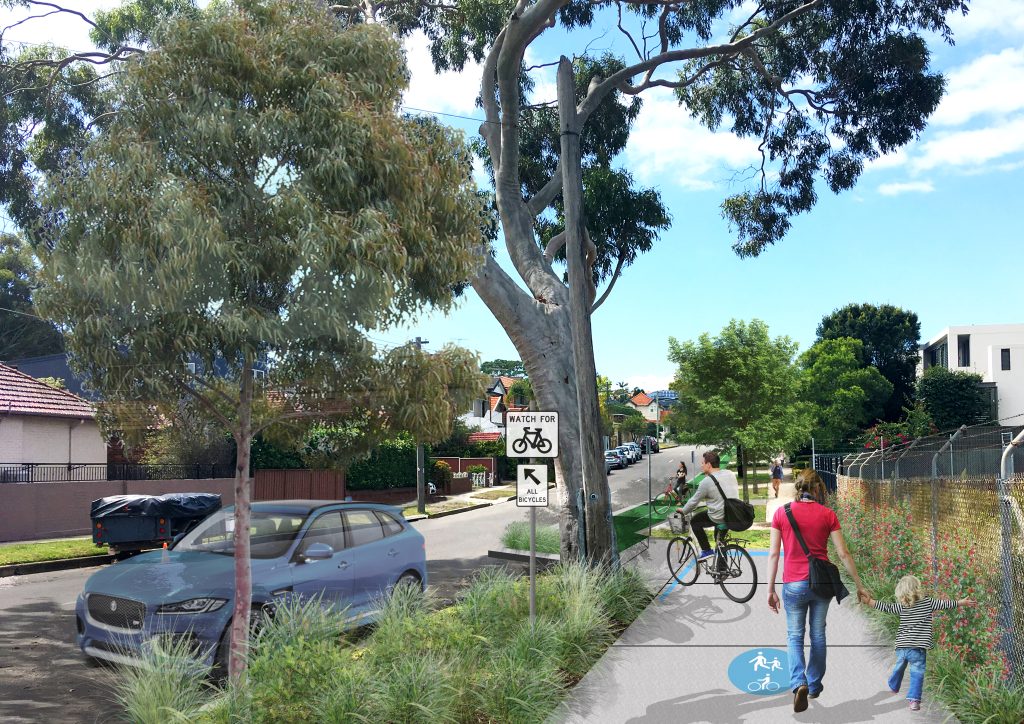
“The key to cycleway design is to do it in ways that most people do not notice,” says Hammond.
The GroupGSA principal envisages a future for Sydney wherein cycleways such as Randwick will perhaps no longer be necessary as the streets will be completely cycle-friendly.
Renders supplied by GroupGSA.
Featured Image: Bourke Street cycleway by Simon Wood.
Photography by Simon Wood.
Intrigued by the advent of the hybrid workforce? Read about the return to pre-pandemic behaviours from Hassell’s Great Adaptations survey.
















